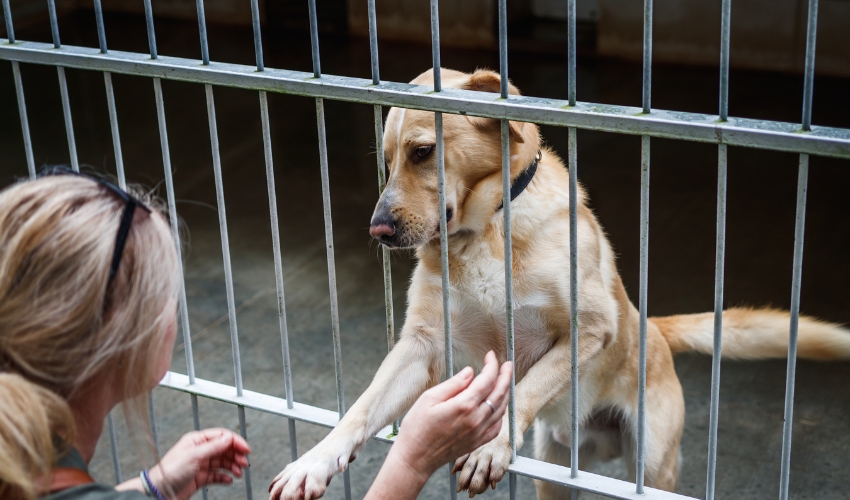No kill as a philosophy seems to have problems. But you can be the solution.
What does no-kill mean?
We’ve talked about the problem with the term no kill before. The term seems to divide even the most passionate animal rescue professionals into two camps; those that agree with the term no kill, and those that do not.
What is even stranger is that there is no universally accepted definition for the term. It seems almost left to each organization to define what no kill means to their organization. For example, Maddie’s Fund defines no-kill as “saving both healthy and treatable dogs and cats, with euthanasia reserved only for unhealthy & untreatable animals.”
However even a quick Google search for the “definition of no-kill” will show you alternative ways to define the same terms. Nathon Winograd, founder of the No Kill Advocacy Center and a staunch advocate for the philosophy and terminology of no kill does not even have a definitive definition within his philosophies on his literature as well
One thing seems to be common across the major players is that the words “no kill” do not universally mean that you cannot humanely euthanize an animal that is untreatable or dangerous. However, this nuance is something “no kill advocates” firmly argue against.
What is the problem with no kill?
 So what is the problem with “no kill” then, you might ask? In our opinion, the biggest problem with no kill is in the mere use of the words “no” and “kill” put together in a single sentence.
So what is the problem with “no kill” then, you might ask? In our opinion, the biggest problem with no kill is in the mere use of the words “no” and “kill” put together in a single sentence.
The dictionary defines “no” as “not any” and uses an example: “there is no excuse”. When you use this phrase in talking about animal welfare, it leaves no room for doubt, no room for discussion and no room for grey area. “..no excuse.” It is an ultimatum of sorts and one that has become a rallying cry for some animal advocates that would rather criticize the actions of others instead of getting involved with resolving the often complicated problems involved with achieving a 100% definition of no kill . (Note: We use the word some because there are definitely others that are actively working in positive ways to solve all of the surrounding issues who deserve our support.)
However if you stick with absolutist language, then even an animal that is suffering with no hope of recovery cannot be humanely euthanized if you are to qualify for a “no kill” label. Thankfully even the staunchest advocates usually take pause when asked if there any exceptions to the phrase if you want to be considered no kill.
Certainly the goal of the no kill terminology is to stop the euthanization of healthy and treatable animals simply due to space and many organizations have established best practices, procedures and step-by-step instructions for how to get there quickly. There’s even a national map that shows you county by county what the live release rate is so you can easily see where the problem spots are.
Why do so many people refer to no kill?
Perhaps it is because “no kill” is great for marketing due to its short character count that so many people and organizations use it. Best Friends Animal Society, one of the leaders in animal welfare in the United States changed their target to “No Kill 2025” which aligned many to their mission while alienating others in the process due to the ambiguity of the slogan.
How can we fix the problems with no kill?
If we want to fix the problems with “no kill” we have to start by recognizing that there is a lot of emotion and context wrapped up in the definition of these words. We need to appreciate the fact that it is a slogan designed for memorable marketing, effective fundraising and targeted goal setting, and that it leaves nuance, details and circumstances out of the character count.
We need to appreciate the fact that it is a slogan designed for memorable marketing, effective fundraising and targeted goal setting, and that it leaves nuance, details and circumstances out of the character count.
We firmly believe that the problem of overpopulation is one caused by humans and one that can be resolved by humans through effective spay and neuter and education. No healthy and treatable animal should ever be euthanized due to space and Doobert was built to provide tools to help organizations and volunteers work together to solve the problem.
The perspective from the No Kill movement
At Doobert we believe in transparency and open dialogue. Members of the No Kill movement reached out and asked to provide their perspective on the topic and so we are including the link to their post so you, the reader can educate yourself regarding all sides of the discussion. We believe in and support the members of the No Kill movement helping animals.
https://www.nokillmovement.org/post/why-we-use-the-phrase-no-kill
JOIN US and SAVE LIVES!
We’d love to have you! Are you looking to sign-up yourself or your organization?












